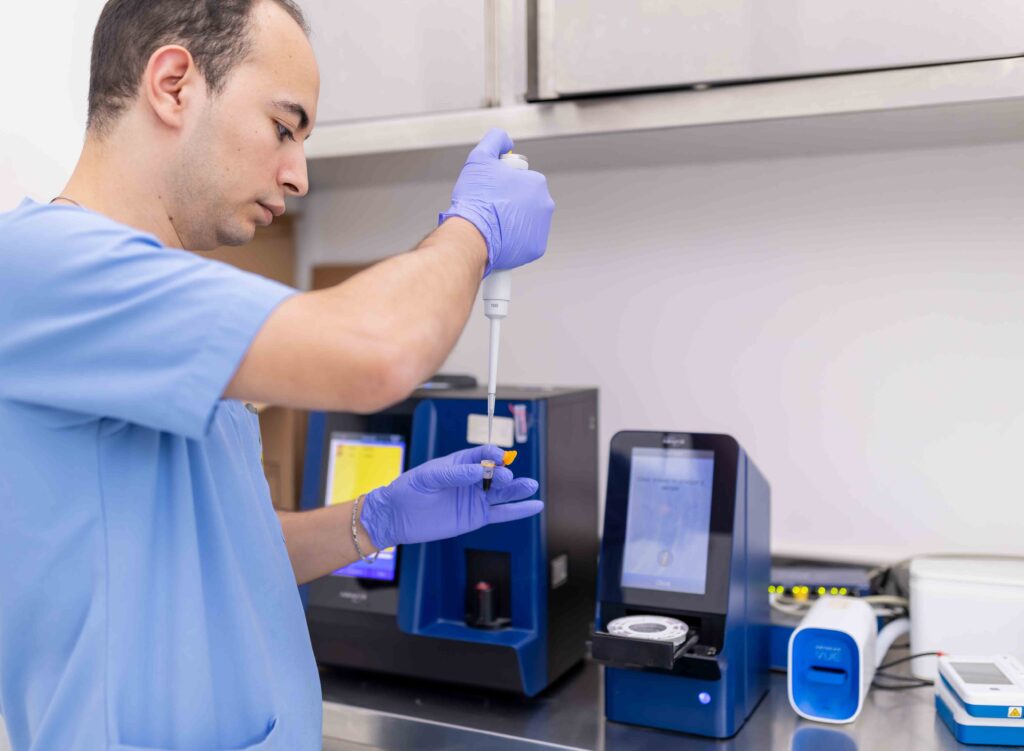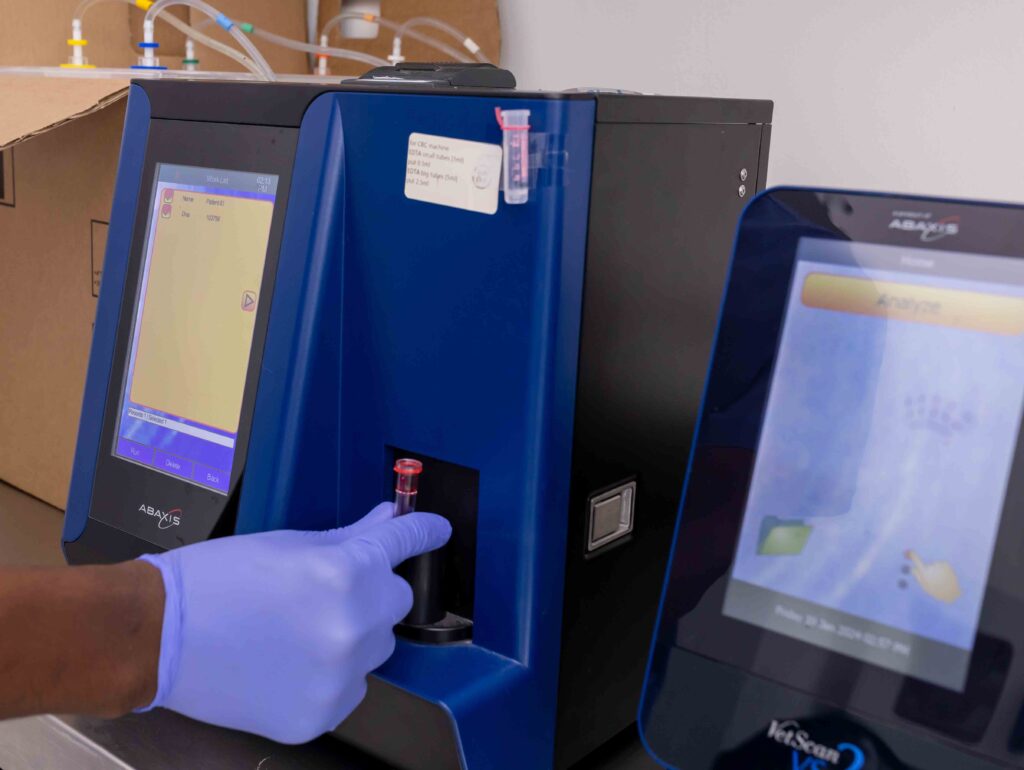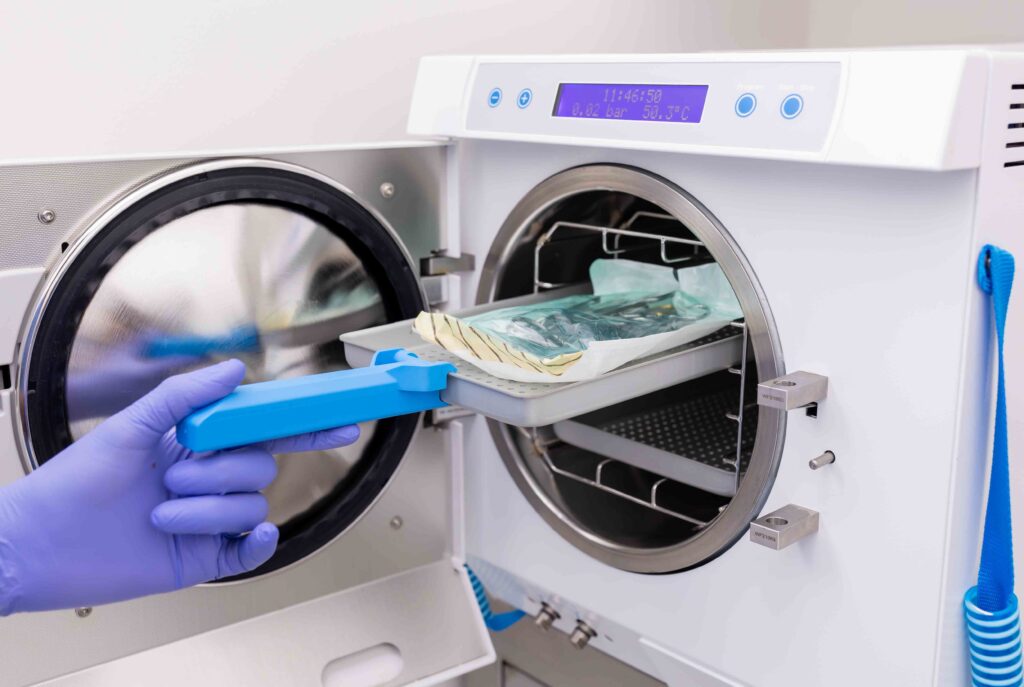Laboratory Diagnostic

At Zoo Veterinary Center, we understand that accurate and timely diagnostics are crucial for the health and well-being of your pet. Our state-of-the-art laboratory is equipped with advanced technology to provide comprehensive diagnostic services. From routine wellness screenings to complex diagnostic procedures, our dedicated team of veterinarians and technicians ensure that your pet receives the highest standard of care.
Services Offered:
- Blood Tests: We offer a wide range of blood tests to evaluate organ function, detect infections, and monitor chronic conditions.
- Urinalysis: Comprehensive analysis of urine samples helps in detecting kidney diseases, urinary tract infections, and other metabolic disorders.
- Fecal Examinations: Detection of parasites and gastrointestinal conditions through microscopic examination of fecal samples.
- Cytology: Examination of cells to diagnose skin conditions, tumors, and other abnormalities.
- Diagnostic Imaging Support: Our laboratory works closely with our imaging department to provide a complete diagnostic evaluation, including X-rays and ultrasound.


Why Choose Us?
- Accuracy and Precision: Our laboratory is equipped with modern technology and staffed by experienced professionals to ensure accurate and reliable results.
- Quick Turnaround: We understand the importance of timely diagnosis. Most results are available promptly to aid in swift treatment decisions.
- Comprehensive Care: Integrated with our veterinary services, our diagnostics help us tailor treatment plans specific to your pet’s needs.
Commonly Asked Questions
Diagnostic imaging refers to techniques like X-rays and ultrasound that create visual images of the inside of your pet’s body. These images help veterinarians diagnose and evaluate a wide range of conditions, from fractures and tumors to internal injuries and organ abnormalities. X-rays are particularly useful for viewing bone structures and detecting issues like broken bones or arthritis, while ultrasound provides detailed images of soft tissues and organs, helping to identify problems with the heart, liver, kidneys, and more. These imaging techniques are essential for accurate diagnosis and effective treatment planning.
Yes, both X-rays and ultrasounds are generally safe for pets. X-rays use a small amount of radiation to create images, but the levels are minimal, and the risk is low. Veterinary clinics take precautions to minimize radiation exposure, such as using protective gear and only performing X-rays when necessary. Ultrasound, on the other hand, uses sound waves rather than radiation, making it completely safe and non-invasive. Both imaging methods provide valuable diagnostic information with minimal risk to your pet.
For an X-ray, your pet will typically need to be positioned in a specific way to obtain clear images. The procedure is quick, but your pet may need to be held still, which sometimes requires mild sedation, especially for anxious or uncooperative pets. For an ultrasound, your pet may need to be sedated or kept still to get clear images, though this is less common. The procedure involves applying a special gel to the skin and using a probe to capture images. Both procedures are generally brief, and your veterinarian will discuss the results with you once the images are reviewed.

